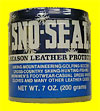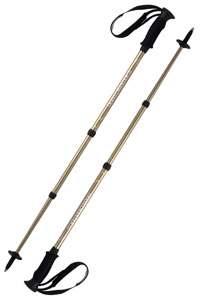|
The Hiking Club easy day hikes for beginners
Hiking Boots, Socks, PolesHow to buy Hiking Boots Hiking boots are important because they provide better grip so you slip less on the trail. They also provide better ankle support than a pair of running shoes, protect feet from banging against rocks and uneven terrain, keep your feet drier, and altogether, lead to less tired feet at the end of the day. No need to spend a bundle on hiking boots. We are a beginners club. While you could spend up to $500 dollars on a pair, we recommend nothing over $200. A price range between $50-$150 is about right. VERY IMPORTANT!You will not be able to 'break-in' a pair a boots. This is the most common mistake made when buying hiking boots. If the boots do not feel and fit right when brand new you will never be able to 'break them in'. It is more important that your boots fit than the price and/or look of the boots. A more expensive pair of hiking boots will be useless unless they fit properly. HOW TO BUY HIKING BOOTS...
(Don't forget to try on 'ugly' boots. They might fit perfectly! Also, do not buy steel toe boots. Steel toe boots are for construction sites - they are dangeriously heavy for hiking. WATER PROOF YOUR BOOTS?Yes, you will need to waterpoof your boots. Even if you buy boots that advertise themselves as being 'waterproof' you will still need to waterproof them. Also, most websites and books recommend waterproofing products that have not been tested in real Rain Forest conditions. The only water proofing product recommended by the Hiking Club is... Sno-Seal Socks! Dry feet are very important! Dry feet will prevent blisters, keep your feet cool during a hot day and warm during a cold day. Cotton socks retain sweat, cause blisters, and are especially bad if your boots are not waterproof. We recommend that you buy and wear two pairs of socks. Buy a pair of thin liner socks and wear a heavier wool/acrylic-blend sock on top. The inner liner sock will wick sweat away from your feet keeping them dry, and the heavier socks will help to cushion your feet preventing blisters. Also bring an extra pair of socks so you can change them half way on the trail. This gives your feet a chance to dry out and breathe, also reducing the chance of blisters. The extra pair of socks is also handy if you step in a stream, or it starts to rain and your feet get wet. Another trick is to clip your toenails a few days before a hike to prevent bleeding from long toenails. Hiking Poles? We recommend some form of hiking poles. Hiking in the rain forest usually involves going up and downhill. Also, trails are often a mixture of rocks, roots, and other rough terrain. While some routes are like 'Stanley park' trails, most are a bit more wild. Hiking poles help with stability preventing slipping and falling and help to 'pull' yourself uphill. Most importantly, poles displace weight on your knees going downhill transfering it to your arms and upper body. Hiking Poles can be very expensive, around $50-$100 per pole. We recommend an old pair of downhill ski poles instead. They work just as good, and are much more inexpensive at between $2-$10. If you break them, or lose them, you'll be able to afford many more. Poles should, when you are standing, reach to your bellybutton. Also, TWO poles are 90% more effective than ONE pole. With TWO poles you can transfer more pressure away from your knees and feet to your arms and upper body. This is especially important going downhill where you can use two poles to cushion each downward step. Technique and practice are all important here. Return to the Hiking Club EQUIPMENT page
Return to the Hiking Club MAIN page
|



